Journal Description
Biosensors
Biosensors
is an international, peer-reviewed, open access journal on the technology and science of biosensors, published monthly online by MDPI.
- Open Access— free for readers, with article processing charges (APC) paid by authors or their institutions.
- High Visibility: indexed within Scopus, SCIE (Web of Science), PubMed, MEDLINE, PMC, Ei Compendex, Embase, CAPlus / SciFinder, Inspec, and other databases.
- Journal Rank: JCR - Q1 (Instruments and Instrumentation) / CiteScore - Q1 (Instrumentation)
- Rapid Publication: manuscripts are peer-reviewed and a first decision is provided to authors approximately 20.6 days after submission; acceptance to publication is undertaken in 3.5 days (median values for papers published in this journal in the second half of 2025).
- Recognition of Reviewers: reviewers who provide timely, thorough peer-review reports receive vouchers entitling them to a discount on the APC of their next publication in any MDPI journal, in appreciation of the work done.
Impact Factor:
5.6 (2024);
5-Year Impact Factor:
5.7 (2024)
Latest Articles
A Portable Dual-Mode Microfluidic Device Integrating RT-qPCR and RT-LAMP for Rapid Nucleic Acid Detection in Point-of-Care Testing
Biosensors 2026, 16(1), 51; https://doi.org/10.3390/bios16010051 - 8 Jan 2026
Abstract
Point-of-care testing (POCT) has emerged as a vital diagnostic approach in emergency medicine, primary care, and resource-limited environments because of its convenience, affordability, and capacity to provide immediate results. Here, we present a multifunctional portable nucleic acid detection platform integrating reverse transcription polymerase
[...] Read more.
Point-of-care testing (POCT) has emerged as a vital diagnostic approach in emergency medicine, primary care, and resource-limited environments because of its convenience, affordability, and capacity to provide immediate results. Here, we present a multifunctional portable nucleic acid detection platform integrating reverse transcription polymerase chain reaction (RT-qPCR) and reverse transcription loop-mediated isothermal amplification (RT-LAMP) within a unified microfluidic device. The system leverages Tesla-valve-based passive flow control to enhance reaction efficiency and operational simplicity. A four-channel optical detection unit allows for multiplex fluorescence quantification (CY5, FAM, VIC, ROX) and has high sensitivity and reproducibility for RT-LAMP. The compact design reduces the overall size by approximately 90% compared with conventional qPCR instruments. For RT-PCR, the system achieves a detection limit of 2.0 copies μL−1 and improves analytical efficiency by 27%. For RT-LAMP, the detection limit reaches 2.95 copies μL−1 with a 14% enhancement in analytical efficiency. Compared with commercial qPCR instruments, the device maintains equivalent quantitative accuracy despite significant miniaturization, ensuring reliable performance in decentralized testing. Furthermore, the total RT-LAMP assay time is reduced from more than two hours to 42 min, enabling truly rapid molecular diagnostics. This dual-mode platform offers a flexible, scalable strategy for bridging laboratory-grade molecular assays with real-time POCT applications, supporting early disease detection and epidemic surveillance.
Full article
(This article belongs to the Section Nano- and Micro-Technologies in Biosensors)
►
Show Figures
Open AccessArticle
Highly Sensitive Detection and Discrimination of Cell Suspension Based on a Metamaterials-Based Biosensor Chip
by
Kanglong Chen, Xiaofang Zhao, Jie Sun, Qian Wang, Qinggang Ge, Liang Hu and Jun Yang
Biosensors 2026, 16(1), 50; https://doi.org/10.3390/bios16010050 - 8 Jan 2026
Abstract
Metamaterials (MMs)-based terahertz (THz) biosensors hold promise for clinical diagnosis, featuring label-free operation, simple, rapid detection, low cost, and multi-cell-type discrimination. However, liquid around cells causes severe interference to sensitive detection. Most existing MMs-based cell biosensors detect dead cells without culture medium (losing
[...] Read more.
Metamaterials (MMs)-based terahertz (THz) biosensors hold promise for clinical diagnosis, featuring label-free operation, simple, rapid detection, low cost, and multi-cell-type discrimination. However, liquid around cells causes severe interference to sensitive detection. Most existing MMs-based cell biosensors detect dead cells without culture medium (losing original morphology), hindering stable, sensitive multi-cell discrimination. Here, a terahertz biosensor composed of a microcavity and MMs can be used to detect and discriminate multiple cell types within suspension. Its detection mechanism relies on cellular size (radius)/density in suspension, which induces effective permittivity (εeff) differences. By designing MMs’ split rings with luxuriant gaps, the biosensor achieves a theoretical sensitivity of ~328 GHz/RIU, enabling sensitive responses to suspended cells. It shows a robust, increasing frequency shift (610–660 GHz) over 72 h of cell apoptosis. Moreover, it discriminates nerve cells, glioblastoma (GBM) cells, and their 1:1 mixture with obviously distinct frequency responses (~650, ~630, ~620 GHz), which suggests effective and reliable multi-cell-type recognition. Overall, this study and its measurement method should pave the way for metamaterial-based terahertz biosensors for living cell detection and discrimination, and this technology may inspire further innovations in tumor investigation and treatment.
Full article
(This article belongs to the Special Issue Advanced Biosensors for Disease Screening, Monitoring, Diagnosis and Treatment)
Open AccessArticle
Microfluidic Chamber Design for Organ-on-a-Chip: A Computational Fluid Dynamics Study of Pillar Geometry and Pulsatile Perfusion
by
Andi Liao, Jiwen Xiong, Zhirong Tong, Lin Zhou and Jinlong Liu
Biosensors 2026, 16(1), 49; https://doi.org/10.3390/bios16010049 - 8 Jan 2026
Abstract
Organ-on-a-Chip (OOC) platforms are microfluidic systems that recreate key features of human organ physiology in vitro via controlled perfusion. Fluid mechanical stimuli strongly influence cell morphology and function, making this important for cardiovascular OOC applications exposed to pulsatile blood flow. However, many existing
[...] Read more.
Organ-on-a-Chip (OOC) platforms are microfluidic systems that recreate key features of human organ physiology in vitro via controlled perfusion. Fluid mechanical stimuli strongly influence cell morphology and function, making this important for cardiovascular OOC applications exposed to pulsatile blood flow. However, many existing OOC devices employ relatively simple chamber geometries and steady inflow assumptions, which may cause non-uniform shear exposure to cells, create stagnant regions with prolonged residence time, and overlook the specific effects of pulsatile perfusion. Here, we used computational fluid dynamics (CFD) to investigate how chamber geometry and inflow conditions shape the near-wall flow environment on a cell culture surface at a matched cycle-averaged volumetric flow rate. Numerical results demonstrated that pillarized chambers markedly reduced relative residence time (RRT) versus the flat chamber, and the small pillar configuration produced the most uniform time-averaged wall shear stress (TAWSS) distribution among the tested designs. Phase-resolved analysis further showed that wall shear stress varies with waveform phase, indicating that steady inflow may not capture features of pulsatile perfusion. These findings provide practical guidance for pillar geometries and perfusion conditions to create more controlled and physiologically relevant microenvironments in OOC platforms, thus improving the reliability of cell experimental readouts.
Full article
(This article belongs to the Special Issue Microfluidics for Biomedical Applications (3rd Edition))
►▼
Show Figures

Figure 1
Open AccessSystematic Review
Hemozoin as a Diagnostic Biomarker: A Scoping Review of Next-Generation Malaria Detection Technologies
by
Afiat Berbudi, Shafia Khairani, Alexander Kwarteng and Ngozi Mirabel Otuonye
Biosensors 2026, 16(1), 48; https://doi.org/10.3390/bios16010048 - 7 Jan 2026
Abstract
Accurate malaria diagnosis is essential for effective case management and transmission control; however, the sensitivity, operational requirements, and field applicability of current conventional methods are limited. Hemozoin, an optically and magnetically active crystalline biomarker produced by Plasmodium species, offers a reagent-free target for
[...] Read more.
Accurate malaria diagnosis is essential for effective case management and transmission control; however, the sensitivity, operational requirements, and field applicability of current conventional methods are limited. Hemozoin, an optically and magnetically active crystalline biomarker produced by Plasmodium species, offers a reagent-free target for next-generation diagnostics. This scoping review, following PRISMA-ScR and Joanna Briggs Institute guidance, synthesizes recent advances in hemozoin-based detection technologies and maps the current landscape. Twenty-four studies were reviewed, spanning eight major technology classes: magneto-optical platforms, magnetophoretic microdevices, photoacoustic detection, Raman/SERS spectroscopy, optical and hyperspectral imaging, NMR relaxometry, smartphone-based microscopy, and flow cytometry. Magneto-optical systems—including Hz-MOD, Gazelle™, and RMOD—demonstrated the highest operational readiness, with robust specificity but reduced sensitivity at low parasitemia. Photoacoustic Cytophone studies demonstrated promising sensitivity and noninvasive in vivo detection. Raman/SERS platforms achieved sub-100 infected cell/mL analytical sensitivity but remain laboratory-bound. Microfluidic and smartphone-based tools offer emerging, potentially low-cost alternatives. Across modalities, performance varied by parasite stage, with reduced detection of early ring forms. In conclusion, hemozoin-targeted diagnostics represent a rapidly evolving field with multiple viable translational pathways. While magneto-optical devices are closest to field deployment, further clinical validation, improved low-density detection, and standardized comparison across platforms are needed to support future adoption in malaria-endemic settings.
Full article
(This article belongs to the Section Biosensors and Healthcare)
►▼
Show Figures

Figure 1
Open AccessArticle
A Hybrid Closed-Loop Blood Glucose Control Algorithm with a Safety Limiter Based on Deep Reinforcement Learning and Model Predictive Control
by
Shanyong Huang, Yusheng Fu, Shaowei Kong, Yuyang Liu and Jian Yan
Biosensors 2026, 16(1), 47; https://doi.org/10.3390/bios16010047 - 6 Jan 2026
Abstract
Due to the complexity of blood glucose dynamics and the high variability of the physiological structure of diabetic patients, implementing a safe and effective insulin dosage control algorithm to keep the blood glucose of diabetic patients within the normal range (70–180 mg/dL) is
[...] Read more.
Due to the complexity of blood glucose dynamics and the high variability of the physiological structure of diabetic patients, implementing a safe and effective insulin dosage control algorithm to keep the blood glucose of diabetic patients within the normal range (70–180 mg/dL) is currently a challenging task in the field of diabetes treatment. Deep reinforcement learning (DRL) has proven its potential in diabetes treatment in previous work, thanks to its strong advantages in solving complex dynamic and uncertain problems. It can address the challenges faced by traditional control algorithms, such as the need for patients to manually estimate carbohydrate intake before meals, the requirement to establish complex dynamic models, and the need for professional prior knowledge. However, reinforcement learning is essentially a highly exploratory trial-and-error learning strategy, which is contrary to the high-safety requirements of clinical practice. Therefore, achieving safer control has always been a major challenge for the clinical application of DRL. This paper addresses this challenge by combining the advantages of DRL and the traditional control algorithm—model predictive control (MPC). Specifically, by using the blood glucose and insulin data generated during the interaction between DRL and patients in the learning process to learn a blood glucose prediction model, the problem of MPC needing to establish a patient’s blood glucose dynamic model is solved. Then, MPC is used for forward-looking prediction and simulation of blood glucose, and a safety controller is introduced to avoid unsafe actions, thus restricting DRL control to a safer range. Experiments on the UVA/Padova glucose kinetics simulator approved by the US Food and Drug Administration (FDA) show that the time proportion of adult patients within the healthy blood glucose range under the control of the model proposed in this paper reaches 72.51%, an increase of 2.54% compared with the baseline model, and the proportion of severe hyperglycemia and hypoglycemia events is not increased, taking an important step towards the safe control of blood glucose.
Full article
(This article belongs to the Special Issue Recent Progress in Wearable Biosensors: Materials, Functions and Applications)
►▼
Show Figures
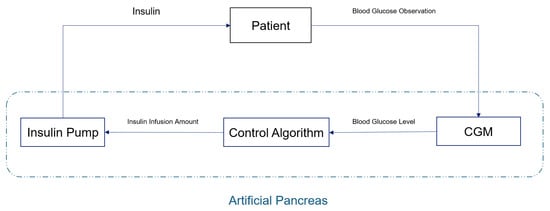
Figure 1
Open AccessReview
Wearable Sensing Systems for Multi-Modal Body Fluid Monitoring: Sensing-Combination Strategy, Platform-Integration Mechanism, and Data-Processing Pattern
by
Manqi Peng, Yuntong Ning, Jiarui Zhang, Yuhang He, Zigan Xu, Ding Li, Yi Yang and Tian-Ling Ren
Biosensors 2026, 16(1), 46; https://doi.org/10.3390/bios16010046 - 6 Jan 2026
Abstract
Wearable multi-modal body fluid monitoring enables continuous, non-invasive, and context-aware assessment of human physiology. By integrating biochemical and physical information across multiple modalities, wearable systems overcome the limitations of single-marker sensing and provide a more holistic view of dynamic health states. This review
[...] Read more.
Wearable multi-modal body fluid monitoring enables continuous, non-invasive, and context-aware assessment of human physiology. By integrating biochemical and physical information across multiple modalities, wearable systems overcome the limitations of single-marker sensing and provide a more holistic view of dynamic health states. This review offers a system-level overview of recent advances in multi-modal body fluid monitoring, structured into three hierarchical dimensions. We first examine sensing-combination strategies such as multi-marker analysis within single fluids, coupling biochemical signals with bioelectrical, mechanical, or thermal parameters, and emerging multi-fluid acquisition to improve analytical accuracy and physiological relevance. Next, we discuss platform-integration mechanisms based on biochemical, physical, and hybrid sensing principles, along with monolithic and modular architectures enabled by flexible electronics, microfluidics, microneedles, and smart textiles. Finally, the data-processing patterns are analyzed, involving cross-modal calibration, machine learning inference, and multi-level data fusion to enhance data reliability and support personalized and predictive healthcare. Beyond summarizing technical advances, this review establishes a comprehensive framework that moves beyond isolated signal acquisition or simple metric aggregation toward holistic physiological interpretation. It guides the development of next-generation wearable multi-modal body fluid monitoring systems that overcome the challenges of high integration, miniaturization, and personalized medical applications.
Full article
(This article belongs to the Special Issue Biosensors for Personalized Treatment)
►▼
Show Figures
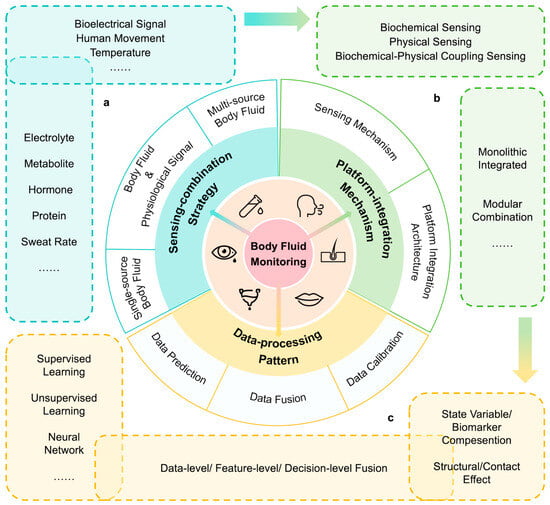
Figure 1
Open AccessCommunication
Magnetic Detection of Cancer Cells Using Tumor-Homing Peptide-Modified Magnetic Nanoparticles
by
Shengli Zhou, Yuji Furutani, Kei Yamashita, Sakuya Kako, Kazunori Watanabe, Toshihiko Kiwa and Takashi Ohtsuki
Biosensors 2026, 16(1), 45; https://doi.org/10.3390/bios16010045 - 5 Jan 2026
Abstract
Magnetic nanoparticles (MNPs) provide a platform for target detection because of their magnetic responsiveness to alternating magnetic fields (AMFs). We developed a detection method using MNPs modified with tumor-homing peptides (THPs), PL1 and PL3, which selectively bind to protein components enriched in malignant
[...] Read more.
Magnetic nanoparticles (MNPs) provide a platform for target detection because of their magnetic responsiveness to alternating magnetic fields (AMFs). We developed a detection method using MNPs modified with tumor-homing peptides (THPs), PL1 and PL3, which selectively bind to protein components enriched in malignant tissues. THP-MNPs were synthesized using maleimide-PEG-NHS linkers and characterized using transmission electron microscopy. Human glioblastoma cancer U87MG and normal tissue-derived HEK293 cells were incubated with THP-MNPs, and the magnetic signals were measured using a high-temperature superconducting quantum interference device (SQUID) magnetometer under an AMF (1.06 kHz). Dark-field microscopy confirmed the preferential binding of THP-MNPs to U87MG cells. In the absence of cells, THP-MNPs exhibited AMF-dependent signal enhancement, which correlated with particle size reduction due to THP release. This increase was completely suppressed in the presence of U87MG cells, indicating a strong THP-mediated interaction. PL3-MNPs exhibited superior discrimination between malignant and non-malignant cells. These results demonstrate that SQUID-based magnetic measurements using THP-MNPs enable rapid and label-free cancer cell detection.
Full article
(This article belongs to the Special Issue Biosensing Applications for Cell Monitoring—2nd Edition)
►▼
Show Figures
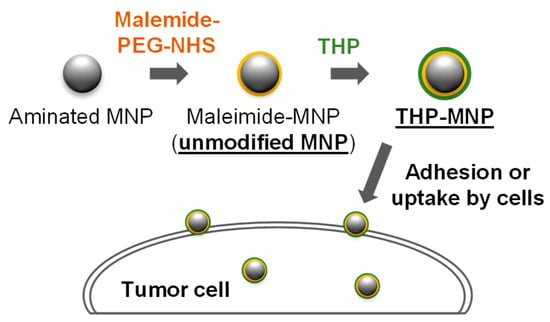
Figure 1
Open AccessReview
Electrochemical Detection of Cancer Biomarkers: From Molecular Sensing to Clinical Translation
by
Ahmed Nadeem-Tariq, John Russell Rafanan, Nicole Kang, Sunny Zhang, Hemalatha Kanniyappan and Aftab Merchant
Biosensors 2026, 16(1), 44; https://doi.org/10.3390/bios16010044 - 4 Jan 2026
Abstract
Early cancer detection is crucial for improving survival rates and treatment outcomes. Electrochemical biosensors have emerged as powerful tools for early cancer detection due to their high sensitivity, specificity, and rapid detection capabilities. This review explores recent advancements (2015–2025) in electrochemical biosensors for
[...] Read more.
Early cancer detection is crucial for improving survival rates and treatment outcomes. Electrochemical biosensors have emerged as powerful tools for early cancer detection due to their high sensitivity, specificity, and rapid detection capabilities. This review explores recent advancements (2015–2025) in electrochemical biosensors for cancer biomarker detection, their working principles, novel nanomaterial-based enhancements, challenges, and prospects for clinical applications. Specifically, we highlight the electrochemical detection of protein biomarkers (e.g., CEA, PSA, CRP), nucleic acid markers (ctDNA, miRNA, methylation patterns), and metabolic indicators, emphasizing their clinical relevance in early diagnosis and monitoring. Unlike previous reviews which focus on either biomarker classes or sensor platforms, this review uniquely integrates both factors. This review provides a novel perspective on how next-generation electrochemical biosensors can bridge the gap between laboratory development and real-world cancer diagnostics.
Full article
(This article belongs to the Special Issue Recent Developments in Nanomaterial-Based Electrochemical Biosensors)
►▼
Show Figures
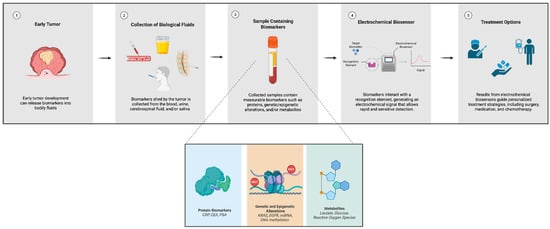
Figure 1
Open AccessReview
Convergent Sensing: Integrating Biometric and Environmental Monitoring in Next-Generation Wearables
by
Maria Guarnaccia, Antonio Gianmaria Spampinato, Enrico Alessi and Sebastiano Cavallaro
Biosensors 2026, 16(1), 43; https://doi.org/10.3390/bios16010043 - 4 Jan 2026
Abstract
The convergence of biometric and environmental sensing represents a transformative advancement in wearable technology, moving beyond single-parameter tracking towards a holistic, context-aware paradigm for health monitoring. This review comprehensively examines the landscape of multi-modal wearable devices that simultaneously capture physiological data, such as
[...] Read more.
The convergence of biometric and environmental sensing represents a transformative advancement in wearable technology, moving beyond single-parameter tracking towards a holistic, context-aware paradigm for health monitoring. This review comprehensively examines the landscape of multi-modal wearable devices that simultaneously capture physiological data, such as electrodermal activity (EDA), electrocardiogram (ECG), heart rate variability (HRV), and body temperature, alongside environmental exposures, including air quality, ambient temperature, and atmospheric pressure. We analyze the fundamental sensing technologies, data fusion methodologies, and the critical importance of contextualizing physiological signals within an individual’s environment to disambiguate health states. A detailed survey of existing commercial and research-grade devices highlights a growing, yet still limited, integration of these domains. As a central case study, we present an integrated prototype, which exemplifies this approach by fusing data from inertial, environmental, and physiological sensors to generate intuitive, composite indices for stress, fitness, and comfort, visualized via a polar graph. Finally, we discuss the significant challenges and future directions for this field, including clinical validation, data security, and power management, underscoring the potential of convergent sensing to revolutionize personalized, predictive healthcare.
Full article
(This article belongs to the Special Issue Wearable Sensors and Systems for Continuous Health Monitoring)
►▼
Show Figures

Figure 1
Open AccessArticle
Engineered PVA Hydrogel as a Universal Platform for Developing Stable and Sensitive Microbial BOD-Biosensors
by
Anastasia Medvedeva, Aleksandra Titova, Anna Kharkova, Roman Perchikov, George Gurkin, Lydmila Asulyan, Leonid Perelomov, Maria Gertsen and Vyacheslav Arlyapov
Biosensors 2026, 16(1), 42; https://doi.org/10.3390/bios16010042 - 4 Jan 2026
Abstract
Polyvinyl alcohol (PVA) hydrogels modified through radical polymerization under UV irradiation and Ce4+ ion treatment were investigated as a potential platform for developing highly sensitive biosensors for rapid biochemical oxygen demand analysis in water. These modifications enhance PVA physicochemical properties, including mechanical
[...] Read more.
Polyvinyl alcohol (PVA) hydrogels modified through radical polymerization under UV irradiation and Ce4+ ion treatment were investigated as a potential platform for developing highly sensitive biosensors for rapid biochemical oxygen demand analysis in water. These modifications enhance PVA physicochemical properties, including mechanical strength, stability, and biocompatibility, making it promising for immobilizing microorganisms in bioanalytical systems. A dual-mediator biosensor system using ferrocene (FC) and neutral red (NR) was developed with yeast Blastobotrys adeninivorans immobilized in modified PVA. The FC+NR–B. adeninivorans–PVA–Ce4+ system exhibited high sensitivity (linear range of 0.1–3.81 mgO2/dm3), selectivity, and operational stability (up to 37 days service life), outperforming existing analogs. Testing with wastewater confirmed strong correlation with standard BOD5, highlighting the potential for monitoring water quality. The described radical modification method is a simple and effective approach for creating sensitive and stable biosensors. It opens up new possibilities for environmental monitoring technology.
Full article
(This article belongs to the Special Issue Cell-Based Biosensors for Rapid Detection and Monitoring (2nd Edition))
►▼
Show Figures
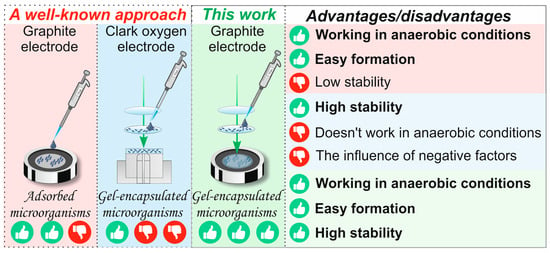
Figure 1
Open AccessArticle
MagSculptor: A Microfluidic Platform for High-Resolution Magnetic Fractionation of Low-Expression Cell Subtypes
by
Zhenwei Liang, Yujiao Wang, Xuanhe Zhang, Yiqing Chen, Guoxu Yu, Xiaolei Guo, Yuan Ma and Jiadao Wang
Biosensors 2026, 16(1), 41; https://doi.org/10.3390/bios16010041 - 4 Jan 2026
Abstract
Heterogeneous expression of a single surface protein within one cell population can drive major functional differences, yet low-expression subtypes remain difficult to isolate. Conventional tube-based immunomagnetic separation collapses all labelled cells into one positive fraction and thus cannot resolve small differences in marker
[...] Read more.
Heterogeneous expression of a single surface protein within one cell population can drive major functional differences, yet low-expression subtypes remain difficult to isolate. Conventional tube-based immunomagnetic separation collapses all labelled cells into one positive fraction and thus cannot resolve small differences in marker abundance. Here, we present MagSculptor, a microfluidic platform for high-resolution magnetic fractionation of low-expression EpCAM-defined subtypes within one immunomagnetically labelled population at a time. Arrays of soft-magnetic strips create localized high-gradient zones that map modest differences in bead loading onto distinct capture positions, yielding High (H), Medium (M), Low (L), and Negative (N) fractions. Finite element method simulations of coupled magnetic and hydrodynamic fields quantify the field gradients and define an operating window. Experimentally, epithelial cancer cell lines processed sequentially under identical settings show reproducible subtype partitioning. In a low-EpCAM model (MDA-MB-231), conventional flow cytometry, under standard EpCAM staining conditions, did not yield a robust EpCAM-positive gate, whereas MagSculptor still revealed graded subpopulations. Western blotting confirms a monotonic decrease in EpCAM abundance from H to N, and doxorubicin assays show distinct in vitro drug sensitivities, while viability remains above 95%. MagSculptor thus helps extend immunomagnetic separation from binary enrichment to multi-level isolation of low-expression subtypes and provides a convenient front-end for downstream functional and molecular analyses.
Full article
(This article belongs to the Special Issue Translational Micro- and Nanofluidic Technologies for Clinical Diagnostics: From Development to Real-World Applications)
►▼
Show Figures
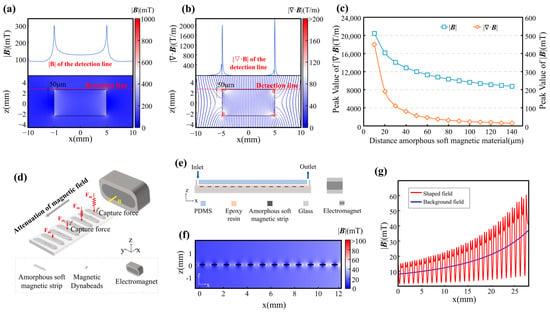
Figure 1
Open AccessArticle
Deep Convolutional Neural Network-Based Detection of Gait Abnormalities in Parkinson’s Disease Using Fewer Plantar Sensors in a Smart Insole
by
Eun-Seo Park, Xianghong Liu, Han-Jeong Hwang and Chang-Hee Han
Biosensors 2026, 16(1), 40; https://doi.org/10.3390/bios16010040 - 4 Jan 2026
Abstract
Early diagnosis of Parkinson’s disease (PD) is crucial for slowing its progression. Gait analysis is increasingly used to detect early symptoms, with smart insoles emerging as a cost-effective and convenient tool for daily monitoring. However, smart insoles have practical limitations, including durability concerns,
[...] Read more.
Early diagnosis of Parkinson’s disease (PD) is crucial for slowing its progression. Gait analysis is increasingly used to detect early symptoms, with smart insoles emerging as a cost-effective and convenient tool for daily monitoring. However, smart insoles have practical limitations, including durability concerns, limited battery life, and difficulties in minimizing the number of sensors. In this study, we designed a novel deep convolutional neural network model for accurately detecting abnormal gaits in patients with PD using a reduced number of sensors embedded in smart insoles. The proposed convolutional neural network (CNN) model was trained on a gait dataset collected from a total of 29 participants, including 13 healthy individuals, 9 elderly individuals, and 7 patients with Parkinson’s disease (PD). Instead of combining plantar pressure data from both feet, the model processes each foot independently through sequential layers to better capture gait asymmetries. The proposed CNN model achieved a classification accuracy of 90.35% using only 8 of the 32 plantar pressure sensors in the smart insole, outperforming a conventional CNN model by approximately 10%. The experimental results demonstrate the potential of our CNN model for effectively detecting abnormal gait patterns in patients with PD while minimizing sensor requirements, enhancing the practicality and efficiency of smart insoles for real-world use.
Full article
(This article belongs to the Special Issue Wearable Sensors and Systems for Continuous Health Monitoring)
►▼
Show Figures

Figure 1
Open AccessReview
Evolution of Biosensors and Current State-of-the-Art Applications in Diabetes Control
by
Yahya Waly, Abdullah Hussain, Abdulrahman Al-Majmuei, Mohammad Alatoom, Ahmed J. Alaraibi, Ahmed Alaysereen and G. Roshan Deen
Biosensors 2026, 16(1), 39; https://doi.org/10.3390/bios16010039 - 3 Jan 2026
Abstract
Diabetes is a chronic metabolic disorder that poses a growing global health challenge, currently affecting nearly 500 million people. Over the past four decades, the rising prevalence of diabetes has highlighted the urgent need for innovations in monitoring and management. Traditional enzymatic methods,
[...] Read more.
Diabetes is a chronic metabolic disorder that poses a growing global health challenge, currently affecting nearly 500 million people. Over the past four decades, the rising prevalence of diabetes has highlighted the urgent need for innovations in monitoring and management. Traditional enzymatic methods, including those using glucose oxidase, glucose dehydrogenase, and hexokinase, are widely adopted due to their specificity and relative ease of use. However, they are hindered by issues of instability, environmental sensitivity, and interference from other biomolecules. Non-enzymatic sensors, which employ metals and nanomaterials for the direct oxidation of glucose, offer an attractive alternative. These platforms demonstrate higher sensitivity and cost-effectiveness, though they remain under refinement for routine use. Non-invasive glucose detection represents a futuristic leap in diabetes care. By leveraging alternative biofluids such as saliva, tears, sweat, and breath, these methods promise enhanced patient comfort and compliance. Nonetheless, their limited sensitivity continues to challenge widespread adoption. Looking forward, the integration of nanotechnology, wearable biosensors, and artificial intelligence paves the way for personalized, affordable, and patient-centered diabetes management, marking a transformative era in healthcare. This review explores the evolution of glucose monitoring, from early chemical assays to advanced state-of-the-art nanotechnology-based approaches.
Full article
(This article belongs to the Section Biosensors and Healthcare)
►▼
Show Figures
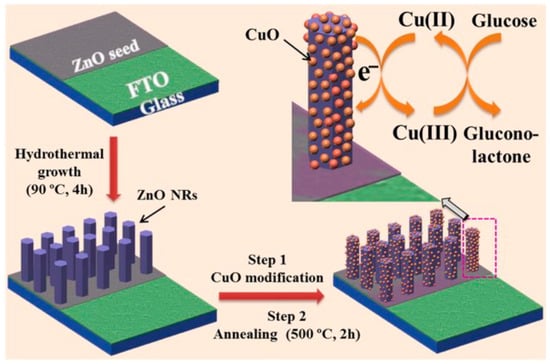
Figure 1
Open AccessArticle
Flexible Inkjet-Printed pH Sensors for Application in Organ-on-a-Chip Biomedical Testing
by
Željka Boček, Donna Danijela Dragun, Laeticia Offner, Sara Krivačić, Ernest Meštrović and Petar Kassal
Biosensors 2026, 16(1), 38; https://doi.org/10.3390/bios16010038 - 3 Jan 2026
Abstract
Reliable models of the lung environment are important for research on inhalation products, drug delivery, and how aerosols interact with tissue. pH fluctuations frequently accompany real physiological processes in pulmonary environments, so monitoring pH changes in lung-on-a-chip devices is of considerable relevance. Presented
[...] Read more.
Reliable models of the lung environment are important for research on inhalation products, drug delivery, and how aerosols interact with tissue. pH fluctuations frequently accompany real physiological processes in pulmonary environments, so monitoring pH changes in lung-on-a-chip devices is of considerable relevance. Presented here are flexible, miniaturized, inkjet-printed pH sensors that have been developed with the aim of integration into lung-on-a-chip systems. Different types of functional pH-sensitive materials were tested: hydrogen-selective plasticized PVC membranes and polyaniline (both electrodeposited and dropcast). Their deposition and performance were evaluated on different flexible conducting substrates, including screen-printed carbon electrodes (SPE) and inkjet-printed graphene electrodes (IJP-Gr). Finally, a biocompatible dropcast polyaniline-modified IJP was selected and paired with an inkjet-printed Ag/AgCl quasireference electrode. The printed potentiometric device showed Nernstian sensitivity (58.8 mV/pH) with good reproducibility, reversibility, and potential stability. The optimized system was integrated with a developed lung-on-a-chip model with an electrospun polycaprolactone membrane and alginate, simulating the alveolar barrier and the natural mucosal environment, respectively. The permeability of the system was studied by monitoring the pH changes upon the introduction of a 10 wt.% acetic acid aerosol. Overall, the presented approach shows that electrospun-hydrogel materials together with integrated microsensors can help create improved models for studying aerosol transport, diffusion, and chemically changing environments that are relevant for inhalation therapy and respiratory research. These results show that our system can combine mechanical behavior with chemical sensing in one platform, which may be useful for future development of lung-on-a-chip technologies.
Full article
(This article belongs to the Special Issue Electrochemical (Bio-)Sensors in Biological Applications—3rd Edition)
►▼
Show Figures

Graphical abstract
Open AccessArticle
Enhanced Reusability of Immobilized T7 DNA Polymerase in Multi-Cycle Exonuclease Reactions on Gold-Coated SAM Biosensor Platforms
by
Julija Sarvutiene, Deivis Plausinaitis, Vytautas Bucinskas, Simonas Ramanavicius, Alma Rucinskiene, Arunas Ramanavicius and Urte Prentice
Biosensors 2026, 16(1), 37; https://doi.org/10.3390/bios16010037 - 3 Jan 2026
Abstract
The reusability of enzymes is a fundamental aspect of sustainable biotechnology and the development of biosensors. This study presents one of the first quantitative evaluations of DNA polymerase reusability by utilizing integrated quartz crystal microbalance (QCM) kinetics and real-time monitoring of exonuclease activity.
[...] Read more.
The reusability of enzymes is a fundamental aspect of sustainable biotechnology and the development of biosensors. This study presents one of the first quantitative evaluations of DNA polymerase reusability by utilizing integrated quartz crystal microbalance (QCM) kinetics and real-time monitoring of exonuclease activity. The results showed that immobilized T7 DNA polymerase retained approximately 50% of its initial activity after three 90-min cycles and around 20% after five cycles. Significantly lower activities were observed for shorter, 45-min cycles. This indicates an unexpected time-dependent enhancement in stability for longer reaction times. The findings suggest a promising trend in enzyme stability and reusability, establishing a quantitative relationship between reaction duration and enzyme performance. This relationship offers a scalable pathway for the regeneration of biosensors and for sustainable enzymatic catalysis. Additionally, the work provides a transferable framework that can be applied to other DNA-processing enzymes, which supports long-term biosensor performance and industrial biocatalysis. The demonstrated approach offers a transferable and scalable methodology for the development of reusable polymerase-based biosensors and sustainable biocatalytic systems.
Full article
(This article belongs to the Section Biosensor and Bioelectronic Devices)
►▼
Show Figures

Graphical abstract
Open AccessReview
Advances in Coumarin Fluorescent Probes for Medical Diagnostics: A Review of Recent Developments
by
Katarzyna Szwaczko, Aleksandra Kulkowska and Arkadiusz Matwijczuk
Biosensors 2026, 16(1), 36; https://doi.org/10.3390/bios16010036 - 2 Jan 2026
Cited by 1
Abstract
This review summarizes recent advances (2023–2025) in coumarin-based fluorescent probes, highlighting their structural modularity, tunable VIS–NIR photophysics, and broad applicability in detecting metal ions, biothiols, ROS/RNS, organelle-specific microenvironments, and amyloid-β aggregates. Particular emphasis is placed on multifunctional and organelle-targeted probes, as well as
[...] Read more.
This review summarizes recent advances (2023–2025) in coumarin-based fluorescent probes, highlighting their structural modularity, tunable VIS–NIR photophysics, and broad applicability in detecting metal ions, biothiols, ROS/RNS, organelle-specific microenvironments, and amyloid-β aggregates. Particular emphasis is placed on multifunctional and organelle-targeted probes, as well as emerging NIR-emissive and theranostic systems enabling deep-tissue imaging and modulation of pathological processes. The perspectives section outlines current limitations and future directions toward clinically relevant coumarin-based imaging tools. A though the review focuses on literature published from 2023 onward, several earlier studies are cited selectively to clarify fluorescence mechanisms, illustrate reaction pathways, or provide essential photophysical benchmarks necessary for contextual understanding.
Full article
(This article belongs to the Special Issue Fluorescent Probes: Design and Biological Applications)
►▼
Show Figures
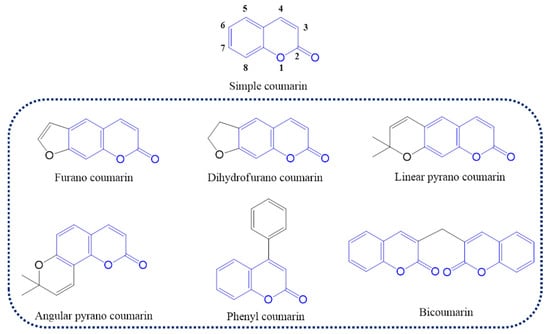
Figure 1
Open AccessArticle
Discovery of the High-Affinity Aptamer for Candidalysin Using a Dual-Mode Colorimetric–SERS Platform
by
Yige Sun, Canlan Zheng, Yuxuan Shi, Mingyuan Sun, Chao Wang, Lin Han, Yu Zhang, Tiezhou Hou and Le Qiang
Biosensors 2026, 16(1), 35; https://doi.org/10.3390/bios16010035 - 2 Jan 2026
Abstract
Candida albicans poses significant health risks through its virulent peptide toxin Candidalysin. As no existing therapeutics specifically target this toxin, developing high-affinity aptamers for its efficient and safe removal is urgently needed. In response, we developed a dual-mode biosensor based on gold nanoparticles
[...] Read more.
Candida albicans poses significant health risks through its virulent peptide toxin Candidalysin. As no existing therapeutics specifically target this toxin, developing high-affinity aptamers for its efficient and safe removal is urgently needed. In response, we developed a dual-mode biosensor based on gold nanoparticles (AuNPs) and aptamers for screening high-affinity aptamers for Candidalysin. This biosensor leverages the localized surface plasmon resonance (LSPR) phenomenon and surface-enhanced Raman scattering (SERS) of AuNPs to detect changes in color and Raman signals, respectively, indicative of high-affinity aptamer for Candidalysin presence. This dual-mode capability reduces false-negative signals and enhances detection accuracy. Our findings reveal a specific aptamer with high affinity for Candidalysin, presenting a significant advancement in candidiasis treatment. This work sets the stage for the development of effective therapeutic strategies against Candida infections.
Full article
(This article belongs to the Special Issue Advanced Sensors for Toxin and Pathogen Detection: Innovations, Challenges and Future Perspectives)
►▼
Show Figures
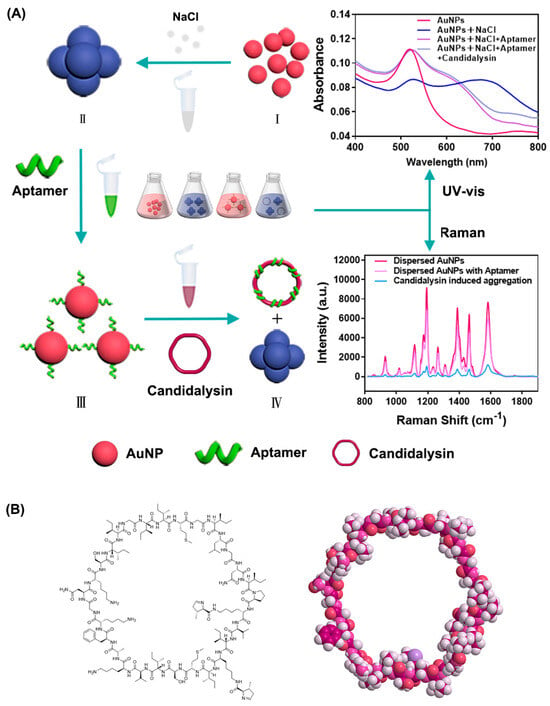
Figure 1
Open AccessArticle
Evaluation of the Cellsway Microfluidic CTC Enrichment and Identification Platform for CTC Detection in Metastatic NSCLC
by
Ebru Özgür, Ayça Çırçır, Begüm Şen Doğan, Şebnem Şahin, Gizem Karayalçın, Mehmet Alper Demir, Başak Erkek, Enes Demirtaş, Özge Zorlu, Furkan Ceylan, Haluk Külah, Nuri Karadurmuş, Mehmet Ali Nahit Şendur and Saadettin Kılıçkap
Biosensors 2026, 16(1), 34; https://doi.org/10.3390/bios16010034 - 2 Jan 2026
Abstract
Lung cancer is the leading cause of cancer-related mortality worldwide, with non-small-cell lung cancer (NSCLC) accounting for the majority of cases. Standard tissue biopsies are invasive and unsuitable for repeated monitoring. Liquid biopsy technologies, particularly circulating tumor cell (CTC) analysis, offer a minimally
[...] Read more.
Lung cancer is the leading cause of cancer-related mortality worldwide, with non-small-cell lung cancer (NSCLC) accounting for the majority of cases. Standard tissue biopsies are invasive and unsuitable for repeated monitoring. Liquid biopsy technologies, particularly circulating tumor cell (CTC) analysis, offer a minimally invasive alternative for real-time disease tracking. To address the need for efficient and reproducible CTC isolation, we developed the Cellsway microfluidic CTC enrichment and identification platform, which employs inertial hydrodynamics in a spiral-shaped microfluidic channel comprising hydrofoil-shaped pillars to enable high-throughput, label-free enrichment of CTCs while preserving cell integrity, followed by an optimized CTC identification assay. Analytical performance assessed through spiking experiments using NSCLC cell lines demonstrated recovery rates of 91.9% for H1975 cells and 78.3% for A549 cells. Clinical validation was performed on blood samples from 51 stage IV NSCLC patients. A 7.5 mL volume of peripheral blood was processed with the SwayBox platform, and enriched CTCs were identified through an optimized multiplex immunofluorescence protocol. CTCs were detected in 47% of NSCLC patients, with counts ranging from 0 to 72 cells per 7.5 mL of blood. At a cutoff of 1 CTC per 7.5 mL, the assay achieved a specificity of 95%. Patient-derived CTCs exhibited smaller mean diameters compared to cultured NSCLC cell lines, yet were effectively enriched through hydro-dynamic tuning. These findings demonstrate that the Cellsway platform enables efficient and re-producible CTC isolation with high specificity, supporting its potential utility for clinical monitoring and precision oncology in NSCLC.
Full article
(This article belongs to the Section Nano- and Micro-Technologies in Biosensors)
►▼
Show Figures

Graphical abstract
Open AccessArticle
Potentiodynamic Fabrication of Aromatic Diamine Linkers on Electrochemically Reduced Graphene Oxide Surface for Environmental Pollutant Nitrobenzene Monitoring
by
Karmegam Muthukrishnan, Venkatachalam Vinothkumar, Mathur Gopalakrishnan Sethuraman and Tae Hyun Kim
Biosensors 2026, 16(1), 33; https://doi.org/10.3390/bios16010033 - 1 Jan 2026
Abstract
The structure of self-assembled monolayers (SAMs) greatly influences electrochemical interface behavior. This study systematically examines how positional isomers of aromatic diamines (ADMs) assemble on a glassy carbon (GC) electrode and how such ordering affects the attachment and performance of electrochemically reduced graphene oxide
[...] Read more.
The structure of self-assembled monolayers (SAMs) greatly influences electrochemical interface behavior. This study systematically examines how positional isomers of aromatic diamines (ADMs) assemble on a glassy carbon (GC) electrode and how such ordering affects the attachment and performance of electrochemically reduced graphene oxide (ERGO). SAMs of ortho-, meta-, and para-phenylenediamine (o-PDA, m-PDA, and p-PDA) were fabricated on GC and characterized using atomic force microscopy (AFM) and Raman spectroscopy. Among them, GC/p-PDA exhibited the most compact and homogeneous interfacial structure. ERGO was subsequently immobilized through the free amine functionalities of the SAM, as confirmed by attenuated total reflectance–Fourier transform infrared spectroscopy (ATR-FTIR), X-ray photoelectron spectroscopy (XPS), and cyclic voltammetry (CV). Strong covalent coupling and electrostatic interactions between the positively charged ERGO and terminal amines enabled stable attachment. Under optimized conditions, the modified GC/p-PDA/ERGO electrode demonstrated exceptional electrocatalytic activity toward nitrobenzene (NBz) reduction, achieving a high sensitivity of 1410 μA mM−1 cm−2 and a low detection limit of 0.040 μM. In addition, this sensor displayed outstanding anti-interference capability, stability, and recovery in a water sample. These results establish GC/p-PDA/ERGO sensor as a robust and efficient electrocatalytically active interface for nitroaromatic pollutants detection and sustainable environmental monitoring.
Full article
(This article belongs to the Special Issue Biosensors for Environmental Monitoring and Food Safety)
►▼
Show Figures

Figure 1
Open AccessArticle
Integrated Colorimetric CRISPR/Cas12a Detection of Double-Stranded DNA on Microfluidic Paper-Based Analytical Devices
by
Zhiheng Zhang, Qiyu Fu, Tiantai Wen, Youmin Zheng, Yincong Ma, Shixian Liu and Guozhen Liu
Biosensors 2026, 16(1), 32; https://doi.org/10.3390/bios16010032 - 1 Jan 2026
Abstract
Early detection of high-risk human papillomavirus (HPV), particularly HPV16 E7, is critical for cervical cancer prevention. Here, we report a novel, portable, and instrument-free biosensing platform that integrates recombinase polymerase amplification (RPA) with CRISPR/Cas12a-mediated detection on a microfluidic paper-based analytical device (μPAD) for
[...] Read more.
Early detection of high-risk human papillomavirus (HPV), particularly HPV16 E7, is critical for cervical cancer prevention. Here, we report a novel, portable, and instrument-free biosensing platform that integrates recombinase polymerase amplification (RPA) with CRISPR/Cas12a-mediated detection on a microfluidic paper-based analytical device (μPAD) for colorimetric, visual readout of double-stranded DNA (dsDNA). The μPAD features seven functional zones, including lyophilized RPA and CRISPR reagents, and immobilized streptavidin and anti-FAM antibodies for signal generation. Upon target recognition, Cas12a’s trans-cleavage activity releases biotinylated-FAM-labeled reporters that form a sandwich complex with gold nanoparticle (AuNP)-conjugated anti-FAM antibodies, producing a visible red signal at the test zone. The gray value of the colorimetric signal correlates linearly with target concentration, enabling the quantitative detection of HPV16 E7 dsDNA down to 100 pM within 60 min. The assay demonstrated high accuracy and reproducibility in spiked samples. By combining isothermal amplification, CRISPR specificity, and paper-based microfluidics, this platform offers a rapid, low-cost, and user-friendly solution for point-of-care HPV screening in resource-limited settings. This work advances the integration of CRISPR diagnostics with μPAD, paving the way for scalable point-of-care molecular diagnostics beyond HPV.
Full article
(This article belongs to the Special Issue Biomedical Applications of Smart Sensors)
►▼
Show Figures

Figure 1

Journal Menu
► ▼ Journal Menu-
- Biosensors Home
- Aims & Scope
- Editorial Board
- Reviewer Board
- Topical Advisory Panel
- Instructions for Authors
- Special Issues
- Topics
- Sections & Collections
- Article Processing Charge
- Indexing & Archiving
- Editor’s Choice Articles
- Most Cited & Viewed
- Journal Statistics
- Journal History
- Journal Awards
- Conferences
- Editorial Office
Journal Browser
► ▼ Journal BrowserHighly Accessed Articles
Latest Books
E-Mail Alert
News
Topics
Topic in
Applied Sciences, Biosensors, Designs, Electronics, Materials, Micromachines, Applied Biosciences
Wearable Bioelectronics: The Next Generation of Health Insights
Topic Editors: Shuo Gao, Yu Wu, Wenyu WangDeadline: 31 March 2026
Topic in
Applied Nano, Biosensors, Materials, Nanomaterials, Chemosensors, Applied Biosciences, Laboratories
Applications of Nanomaterials in Biosensing: Current Trends and Future Prospects
Topic Editors: Kundan Sivashanmugan, Xianming KongDeadline: 30 April 2026
Topic in
Analytica, Biosensors, Foods, Molecules, Pharmaceuticals, Separations, Environments, Chemosensors
Innovative Analytical Approaches for Natural Products and Pharmaceuticals in Complex Matrices
Topic Editors: Rosanna Ciriello, Filomena Lelario, Carmen TesoroDeadline: 30 June 2027
Topic in
Biosensors, IJMS, Applied Nano, Biophysica, Nanomaterials
Nanomaterials or Bioreceptors Involved in Biosensing Technologies
Topic Editors: Robert Ziółkowski, Seyed R. TabaeiDeadline: 31 August 2027

Conferences
Special Issues
Special Issue in
Biosensors
Advances in Biosensing and Bioanalysis Based on Nanozymes
Guest Editors: Lei Jiao, Ruijin ZengDeadline: 15 January 2026
Special Issue in
Biosensors
Biosensors Based on Functional Nanomaterials
Guest Editors: Xinyi Wang, Zewen Wei, Rui ChenDeadline: 25 January 2026
Special Issue in
Biosensors
Sensors for Human and Animal Health Monitoring
Guest Editor: Zemeng FengDeadline: 30 January 2026
Special Issue in
Biosensors
Materials and Techniques for Bioanalysis and Biosensing—2nd Edition
Guest Editor: Nongyue HeDeadline: 30 January 2026
Topical Collections
Topical Collection in
Biosensors
Microsystems for Cell Cultures
Collection Editors: Iordania Constantinou, Thomas E. Winkler














